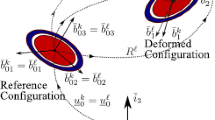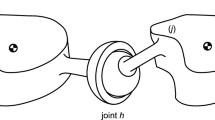Abstract
. The revolute-joint is an important component of a mechanical system. Thus, the motion simulation of multibodies connected with revolute-joints is of common interest. A simple revolute-joint can be easily represented in a numerical way, whereby the bending moment at the particular joint equals zero. Formulation becomes complicated when involving bending limits, the resistive moment and the damping effect. Furthermore, several bodies connected with revolute-joints form a complex system. This has been particularly useful for simulating a multibody system. A novel revolute-joint model is proposed in this paper. Several possible methods are suggested to handle bending limits. The incor-poration of the resistive moment and damping effects are also presented. The numerical stability of the revolute element is discussed, and a stability criterion suggested. The revolute-joint element is incorporated into an explicit finite difference code developed by the authors. Numerical examples are shown for different methods and conditions.
Similar content being viewed by others
Author information
Authors and Affiliations
Rights and permissions
About this article
Cite this article
Wong, S., Hamouda, A. & Hashmi, M. Development of Revolute-Joint Element with Rotation Limits, Locking, Resistive Moment and Damping. Eng Comput 18, 1–13 (2002). https://doi.org/10.1007/s003660200000
Issue Date:
DOI: https://doi.org/10.1007/s003660200000




